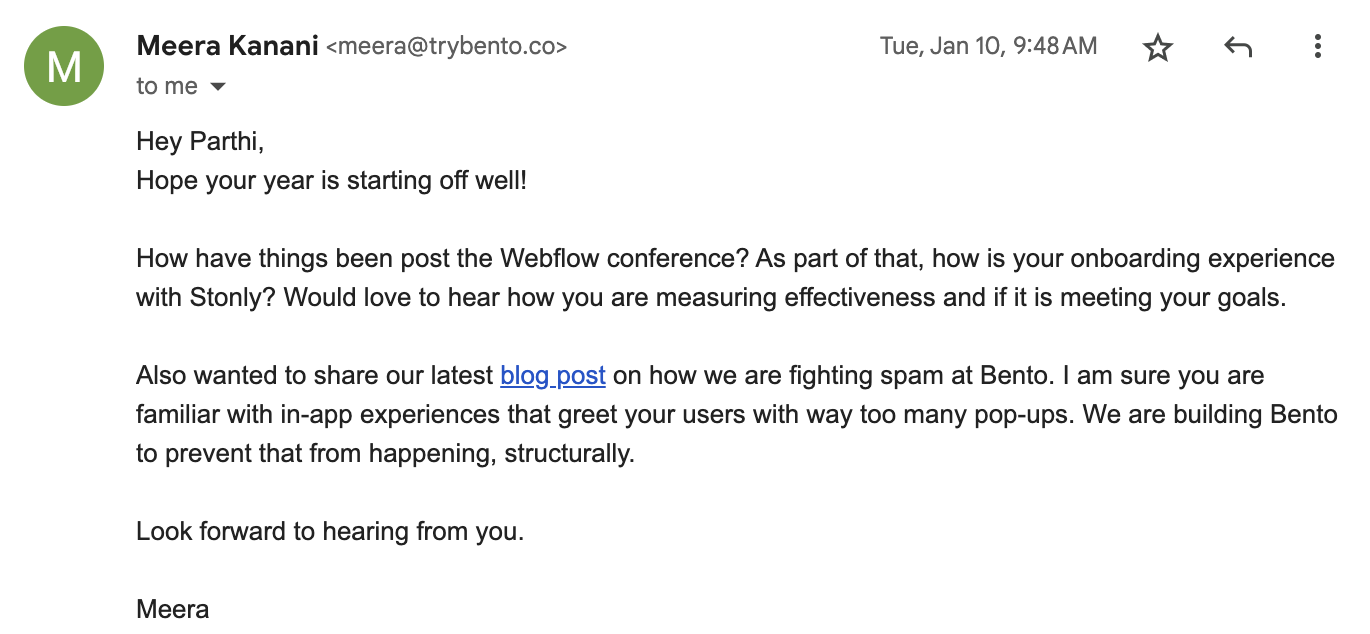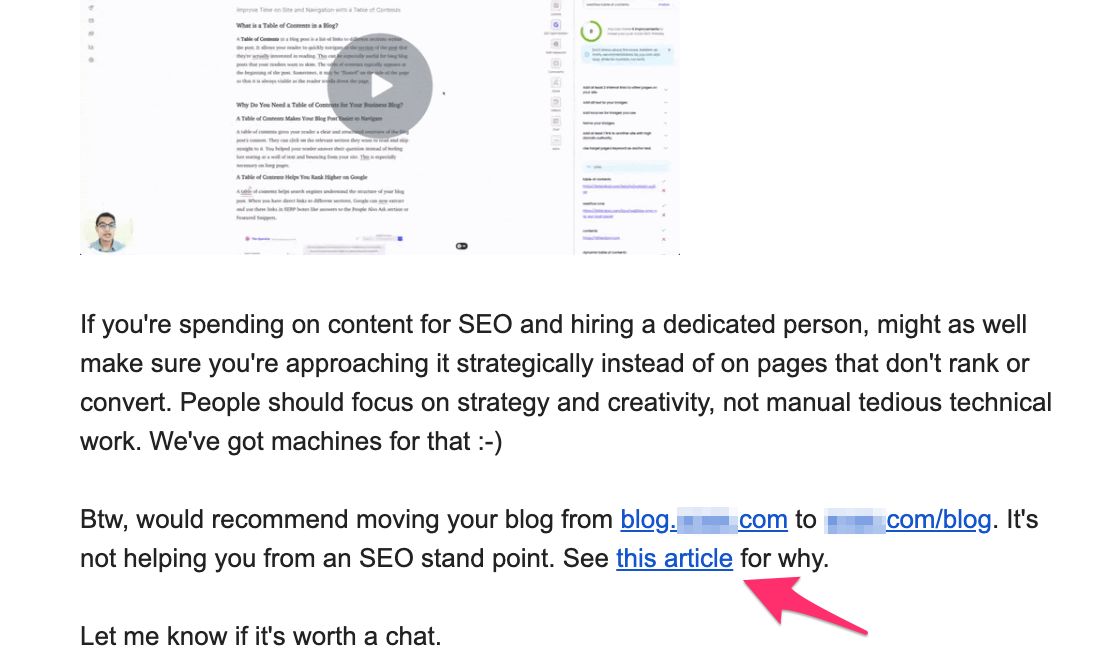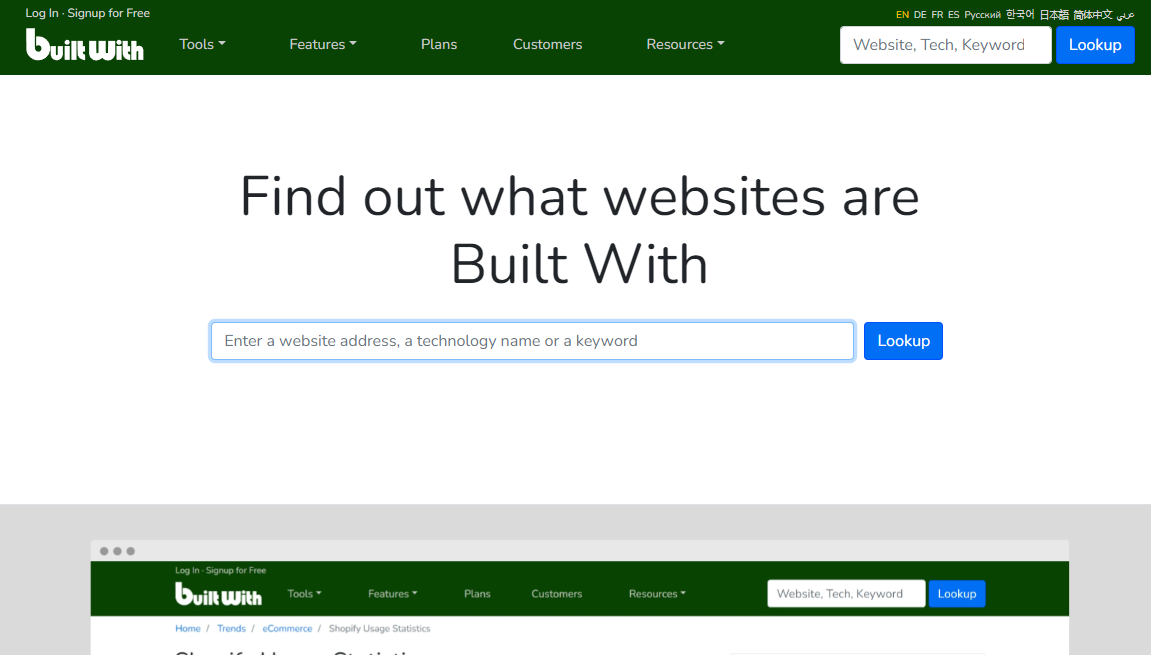How to Use Content in Prospecting Emails to Avoid the Cold Shoulder
Tired of being "left on read" by your prospects? Here's how Letterdrop CEO Parthi Loganathan and his team snag their prospects' attention by sharing value-additive content in their cold emails.
by
Parthi Loganathan
PUBLISHED Jul 24, 2023
UPDATED Jul 31, 2025
As a Sales Development Representative, you know that cold emails are a necessary part of your job. You've sent thousands of "let's get on a call" messages to prospects — and lost count of how many times you've been ignored. Ouch.
We feel you, sales reps.
"Let's get on a call" messages are spammy and impersonal. That's where email personalization comes in — specifically, using content to personalize your sales outreach. When you share valuable content that addresses your prospect's specific challenges, you transform cold outreach into warm conversations.
What is real email personalization in sales prospecting?
Meaningful email personalization goes beyond the basic [First Name] tag. It's strategically tailoring your message to address a prospect's specific challenges and goals. You're not blasting identical templates. You're crafting relevant messages that offer genuine value. When you demonstrate you've done your homework, you instantly cut through inbox noise and build credibility to actually start conversations.
Why people don't respond to outbound emails
Ask any decision-maker about their email inbox, and they'll tell you it's flooded. Even as the CEO of a seed-stage business, I get over 30 emails a day selling me lead gen services or outsourced developers. You can only imagine what the inbox of a VP of Engineering at a 1,000-person company looks like.
When you send impersonal emails about your product and ask for a meeting, you're making a request without providing any value.
Now why should they give their time to a total stranger?
I generally only respond to emails if:
- There's a personal connection. This is out of your control; you can't have gone to the same school as all your prospects.
- They give me something valuable at the right time. This is completely under your control and what we're going to focus on.
That's what Meera Kanani from the Bento team did for me recently when she shared content on fighting spammy in-app notifications. Our own self-serve onboarding notifications were top of mind, and she sent me a very helpful guide on how to think about them.

We practice what we preach at Letterdrop and use content in our cold emails too. I got a demo booked within minutes of sending this email where I sent them an article from our blog:

TLDR? You need to provide value before you make an ask. Otherwise, your cold emails will be moved to the trash (or even worse — the dreaded spam folder... shudders).
Create cold email sequences around targeted customer problems
Be honest — do you tend to spam everyone with the same email?
It may be the easy way out, but it also makes it look like you don't care about individual customers. No one wants to respond to a mass email.
You want to personalize emails, but you also need to send hundreds every week to hit your targets. Segmenting your prospects is a good way to personalize while still operating at scale. Think about a problem you're trying to solve and look for public sig nals that a person might face those problems. Segment your list by the problem and personalize those emails to address that specific pain point.
Use data from AI research, social media posts on LinkedIn, company blogs and websites, platforms like BuiltWith, new funding rounds, employee growth numbers, positions they're hiring for, etc, to identify problems.
Example 1: Using BuiltWith To Create Sequences
Letterdrop is a CMS for Webflow that brings it to parity with WordPress. We use BuiltWith to find companies that have sites on Webflow and email their Head of Marketing or Content.

Example 2: Sequence for People Who Started a New Job
We also have a sequence for when a Head of Content starts a new job.
We know they probably need to orient themselves at the new company and be successful. So we send them an email offering to help them think through a strategy for their first three months.
Generic outreach makes your customer feel like they're just another number you're trying to hit. A personal approach makes them feel that you've specifically thought of them and reached out because you want a two-way conversation.
Tailor your content to your sequences
You've got your sequence. Now it's time for content that educates your buyer and increases your response rate.
Talk to your marketing team and create thoughtful sales enablement content for every sequence to share with and help your prospect.
Example 1: Sharing Webflow Tutorials in an Email Sequence Targeting Companies that Use Webflow
For our Webflow sequence, our second sequenced email has a guide on adding dynamic tables to Webflow if we notice that they don't have one.

Example 2: Sharing a 90-Day Guide in an Email Sequence Target for Newly Hired Content Leads
We also created a 90-day guide for new Heads of Content. It's an actionable plan to get them that first win in their new role.
The response we received was overwhelmingly positive.

Since we started including content in outbound emails last month, our cold email response rate has increased by 4%. We're creating even more sequences with tailored sales enablement content to help our prospects do their jobs better and using that to start sales conversations.
Email personalization best practices for sales teams
Personalizing at scale can feel like a puzzle, but it's easier than you think with the right approach. Here are a few best practices to keep in mind:
-
Focus on triggers, not just traits. A new job, a recent funding announcement, or a new tool they've adopted are powerful reasons to reach out.
-
Personalize the 'why you, why now'. Always answer the unspoken question in your prospect's mind: 'Of all the people to email, why me, and why are you emailing me today?'
-
Go beyond the first line. Personalize your call-to-action based on their role or challenges. A generic 'let's chat' is weak. A specific 'happy to share how we helped a similar VP of Sales solve X' is powerful.
-
Automate the research, not the relationship. Use tools to find personalization points quickly, but the message itself should feel human. Let AI find the data so you can focus on the connection.
No one needs more spam in their inbox. Personalizing your message with value-additive content before making an ask increases your response rate and creates a lasting impression.
So, the next time you're crafting an email, try to see how you can drop in a targeted sales enablement piece, and you'll be even closer to closing that sale.
If you want to figure out how to have a conversation with your marketing team on creating sales enablement content, feel free to reach out.
Letterdrop offers tooling to make it easy to request content and extract top questions from sales calls to inform your marketing team's sales enablement content.
Related articles
Subscribe for weekly updates
Receive insider stories and data-backed insights for elevating your work and staying ahead of the curve
You can unsubscribe at any time using the link in our emails. For more details, review our privacy policy.
